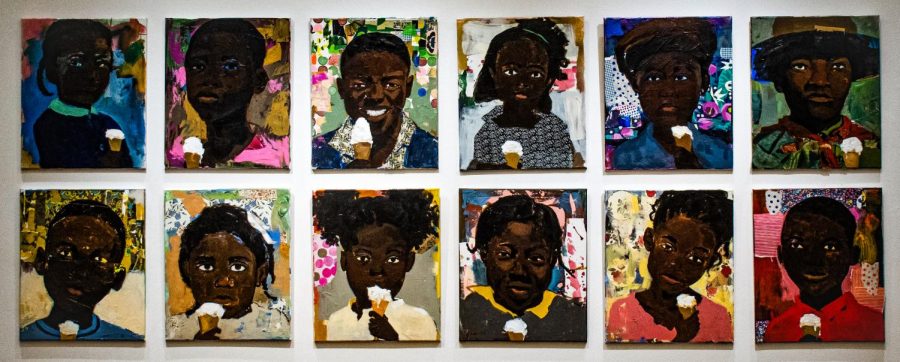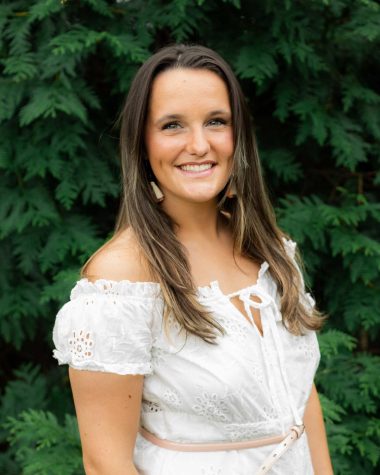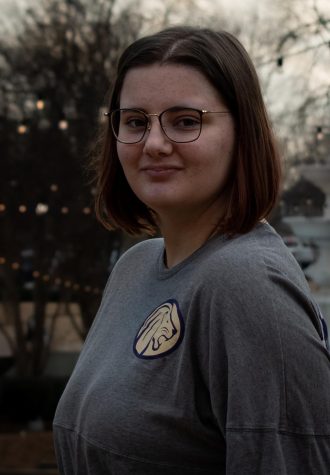Ransome’s ‘Say It Out Loud’ in-person
February 27, 2022
The Elaine Bailey Augustine Art Gallery located on UNA’s Main Campus will host works by artist Ransome for the month of February. The gallery is titled, “Say It Loud” and is inspired by Ransome’s African American lineage. The Visual Arts and Design department will host the New York resident artist in person on Feb. 22. During his visit, Ransome will participate in a gallery talk in the art building with a reception to follow. The event will be open to both students and the public. Attendees will have the opportunity to converse with the artist and view selected pieces from his collection of creative works.
The Visual Arts and Design department describes Ransome’s gallery as telling “personal stories by the interplay between symbols and social, racial, ancestral, economic, and political histories that alludes to current issues.” I had the opportunity to speak one-on-one with artist Ransome following a sneak peek of the university’s gallery. Upon speaking with the artists, I found him to be as delightful a conversationalist as he is a painter. At this point, I also think it necessary to add that I fall on the lesser side of the spectrum of natural inclination to art. Not because I don’t appreciate a beautiful creation, but more so that I had previously never understood the emotional attachment some viewers seemingly naturally acquire.
Upon my initial walk through Ransome’s exhibit, I found a collection of paintings to catch my eye. While this may sound uneventful to the typical aesthete, my novice eyes did not know what to think of said attraction. After explaining the foreign sensation to Ransome, he described the ideas behind the work. I asked him specifically to help me understand the contents of the portrait of the young man dancing.
“The man who looks like he’s dancing, that painting is about redlining” Ransome says, “it’s about African American entertainers, athletes, singers, dancers, and the things they have to do to be successful.”
He describes the theoretical “switch” that occurs in African American culture when society forces limiters on black cultural norms in an attempt to push white culture. As Ransome described his abstract tendencies in painting, he began to sew a narrative in my mind of the art from his gallery. I began to reflect on the emotional connection I felt towards the young man seemingly dancing on a tightrope. Ransome began describing to me the challenges that the African American community have faced in the past and continue to face under similar pretenses. After witnessing the mesmerizing artwork paired with hearing Ransome’s emotional connection to his pieces, I grew curious of the elements that it takes to build such an inspiring creator.
“The best way to sum up my work practice is that I know I’m going to the grocery store,” Ransome adds, “But I’m not quite sure how to get there… so I allow myself to get lost along the way. I’m learning and experiencing new things on my journey to the store. It’s like a dance of being lost and found; a discovery of mistakes.” He added that his favorite part of creating his artwork is not knowing the next steps.
Being the Type A planner that I am, I questioned the effort that must surround him when stepping into the abstract mindset to create such pieces. As Ransome elaborated on the spontaneity of his creative process, I began to reflect on some of the pieces that I merely glanced over in comparison to the aforementioned “dancing man.” For example, I found myself tilting my head trying to unlock the creative mindset required to appreciate his array of collages in the gallery. As my inability to grasp the message grew seemingly unavoidable, I simply passed by without a second thought. Ransome, noticing my lack of understanding of such pieces, began to describe the theoretical journey that viewers must embark on to fully understand their significance.
“One of my core things is that one of the last things we need in this world is another painting,” explains Ransome, “If you’re gonna do a painting, then you got to think about what it’s bringing to your viewers and what it’s really about.”
Ransome described his goals as an artist as creating art that “continues the conversation” of witnessed inequalities that he encourages his viewers to discuss.
“It continues the conversation. I don’t have the answer and I don’t try to solve the problem on my own,” Ransome adds, “But I start or continue the conversation to bring the viewer to that conclusion on their own.”
And in the context of our discussion, continuing the conversation is exactly what he did. While a process that originally felt gradual at the start of our talk, I suddenly realized the significance to my inexplicable attraction to Ransome’s gallery.
I began associating the children in his paintings with the students I have spent my student internship teaching. I saw the disconnect in my student’s eyes as they opened history books to see the faces of men who look nothing like them. I started to see their smiles represented in the faces in Ransome’s collection. Upon such realization, I felt a sort of gravitational pull to discuss and learn more about the community of persons I thought I understood completely.
As my conversation with Ransome drew on, my interest in this subject matter grew exponentially. So much so that after our conversation ended, I did something I had never done before: I re-visited the gallery I had already seen; staring into the contents of the works in utter appreciation and connection.




